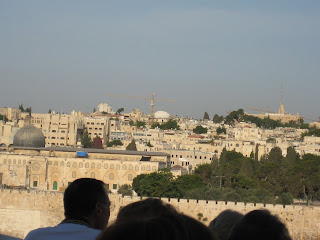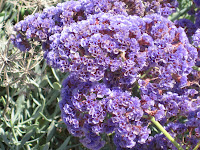Half way down the road, we stopped in a garden area on the Mount of Olives for a teaching from Kay. The morning was cool and the light soft. We sat high on the hill looking over Jerusalem and the Old City. Like always, Kay oriented us in the location we were at. Over the Kidron Valley we could see the eastern gate. The gate has been bricked up by the Muslims because they know Messiah is coming back through that gate, so they are attempting to prevent His coming. In addition to that, they established a Muslim graveyard just outside the gate. Graveyards are unclean ground, so again this is a maneuver to stop Messiah from returning. We could also see the Dome on the Rock, which does not line up with the eastern gate as they think the Temple originally would have been built (so the Muslims built on the wrong spot?? Poor planning.).
Kay taught on Matthew 24 when Jesus told the disciples about the Temple that the “not one stone will be left here upon another which will n
 ot be torn down” (verse 2). He then warned them about false Christs. She also told about the signs of His coming.
ot be torn down” (verse 2). He then warned them about false Christs. She also told about the signs of His coming.After that we walked further down the Palm Sunday Road and entered into the Garden of Gethsemane which is cared for by Franciscan monks. The Garden is well manicured, which certainly isn’t the way it was when Jesus agonized there as He prepared to take our sins upon Himself. Gethsemane was an oil production area. The garden was filled with Olive trees whose stumps could have been there at the time of Christ. When an olive tree is cut when it is old, it has the durability to regenerate and sprouts anew at the base. Some huge stumps were gnarled and twisted, yet they still boasted abundant branches. Marilyn noted that there was the Garden also contained Rosemary and Lavender bushes. In contrast to the chaotic action of the city, we had a time of peacefulness and reflection in this serene shelter.
















































